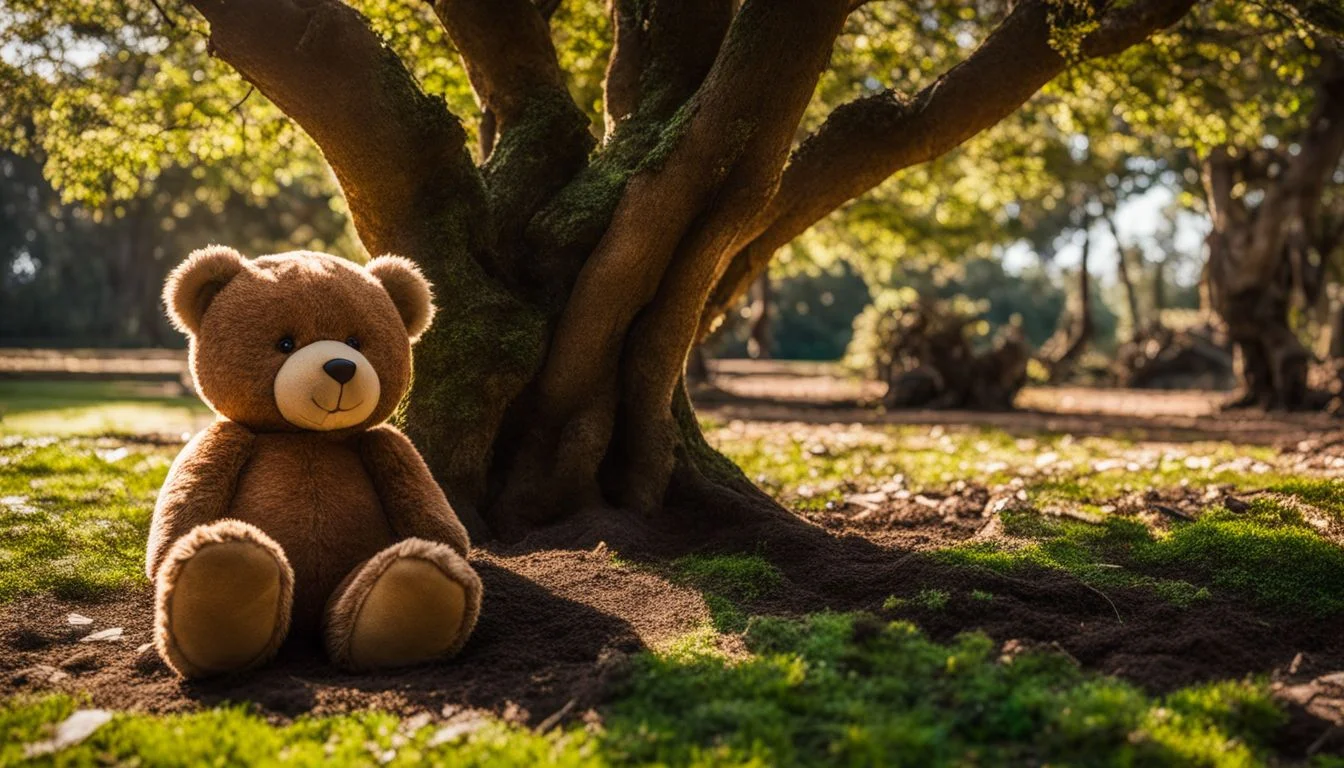Introduction to the Teddy Bear Magnolia Tree
Are you looking to add a touch of elegance and beauty to your garden? The teddy bear magnolia tree is the perfect choice. Known for its lush foliage and stunning blooms, this unique tree combines charm with functionality. Whether you’re an avid gardener or just starting out, the teddy bear magnolia will capture your heart and elevate your outdoor space. Let’s dive into what makes this tree so special and how it can transform any landscape.
Physical Description of the Tree
The Teddy Bear Magnolia Tree is a sight to behold. This small to medium-sized tree typically reaches heights of 10 to 20 feet, making it perfect for residential landscapes. Its growth habit is compact and bushy, often resembling a well-rounded shrub.
The leaves are thick, glossy green ovals that create an attractive backdrop throughout the year. They can grow up to six inches long and give off a pleasant fragrance when crushed.
In spring, the Teddy Bear Magnolia showcases stunning white blooms with soft pink edges. These large flowers can measure up to eight inches across and emit a subtle sweet scent that attracts pollinators like bees.
Bark texture adds character as well; it’s smooth and grayish-brown in color. The overall aesthetic makes this tree not only visually pleasing but also ideal for any garden or yard setting.
Ideal Growing Conditions for the Tree
The teddy bear magnolia tree thrives best in USDA hardiness zones 5 to 9. It prefers locations with well-draining, slightly acidic soil that is rich in organic matter.
Sunlight plays a crucial role in its growth. Aim for full sun exposure, ideally at least six hours a day. This ensures vibrant blooms and strong foliage.
Watering practices are essential as well. Regular watering during dry spells helps the tree establish roots but avoid soggy conditions to prevent root rot.
Mulching around the base can help retain moisture while suppressing weeds. A layer of organic mulch will also enhance soil quality over time.
Pay attention to wind protection too; this delicate beauty benefits from being shielded against harsh winds which can damage its leaves and flowers.
Benefits and Uses of the Teddy Bear Magnolia Tree
The Teddy Bear Magnolia Tree is cherished for its striking beauty and numerous benefits. With lush, dark green leaves that provide a stunning backdrop, this tree adds aesthetic value to any garden or landscape.
Beyond looks, it offers shade during hot summer months. Its broad canopy creates a cool retreat for family gatherings or outdoor relaxation.
This magnolia also attracts pollinators like bees and butterflies, contributing positively to local ecosystems. It’s an excellent choice for gardeners aiming to promote biodiversity.
Furthermore, the fragrant white blossoms in spring emit a delightful scent that enhances outdoor spaces. This makes it perfect for patios and gardens alike.
Families can enjoy planting these trees as they are low-maintenance yet rewarding additions to yards. Their sturdy nature means they withstand various weather conditions without much fuss.
Maintenance and Care Tips for the Tree
To keep your teddy bear magnolia tree thriving, regular watering is essential, especially during dry spells. Aim for deep watering to encourage a robust root system.
Mulching around the base can help retain moisture and suppress weeds. A layer of organic mulch 2-3 inches thick will do wonders.
Pruning should be done in late winter or early spring. This helps shape the tree and remove any dead or damaged branches. Always use clean tools to prevent disease spread.
Fertilizing once in spring with a balanced fertilizer promotes healthy growth. Look for slow-release options that provide nutrients over time.
Be vigilant about pests like aphids or scale insects, as they can affect leaf health. If spotted, treat them promptly with insecticidal soap or neem oil to keep your tree flourishing without harm.
Common Diseases and Pests for the Tree
The teddy bear magnolia tree, while resilient, is not immune to diseases and pests. Understanding these threats can help ensure its health.
One common issue is leaf spot, which presents as dark brown or black spots on the foliage. This fungal infection thrives in humid conditions. Regularly inspecting leaves can catch this early.
Scale insects are another concern. They appear as small bumps on branches and leaves, sucking sap from the plant. Frequent checks will help identify an infestation before it becomes severe.
Another pest to watch for is the magnolia borer. These larvae burrow into branches, causing damage that may lead to dieback. Keeping a close eye on your tree’s bark will help you spot any signs of trouble.
Prompt action with appropriate treatments can keep your teddy bear magnolia thriving amid these challenges.
Where to Purchase a Teddy Bear Magnolia Tree
Finding a Teddy Bear Magnolia Tree is an exciting journey. Several reliable sources offer healthy, well-cared-for specimens.
Local nurseries are often the best starting point. They provide firsthand knowledge about the tree’s specific needs and care tips tailored to your region. Plus, you can inspect the plant before buying.
Online retailers also have a variety of options available. Websites specializing in rare or unique plants frequently stock these magnolias. Always check reviews and ratings for quality assurance.
Consider local gardening clubs or botanical gardens as well. They might host sales or know reputable suppliers in your area.
Don’t forget to explore social media groups focused on gardening. Enthusiasts often share leads on where to find sought-after trees like the Teddy Bear Magnolia!
Conclusion
The teddy bear magnolia tree stands out as a delightful addition to any garden or landscape. Its unique features and charm make it a favorite among plant enthusiasts.
With proper care, this tree can flourish beautifully for years. It offers not only aesthetic appeal but also provides numerous benefits. From shade to privacy, it enhances outdoor spaces in various ways.
Whether you’re an experienced gardener or just starting out, the teddy bear magnolia is worth considering. Its resilience and stunning blooms create a serene atmosphere that many seek in their gardens.
Explore options for incorporating this magnificent tree into your outdoor haven. Embrace the beauty and elegance of the teddy bear magnolia tree today!
FAQs
The Teddy Bear Magnolia Tree is a delightful addition to any garden, but you may have some lingering questions. Here are some frequently asked questions that can help you further understand this lovely tree.
Q: What is the growth rate of a Teddy Bear Magnolia Tree?
A: Teddy Bear Magnolias typically grow at a moderate pace, reaching about 10-15 feet in height within several years. With proper care, they can continue to thrive and expand their canopy over time.
Q: How often should I water my Teddy Bear Magnolia Tree?
A: These trees prefer well-drained soil and generally require watering once a week during dry spells. However, always check the soil moisture before watering.
Q: Can the Teddy Bear Magnolia Tree withstand cold weather?
A: Yes! The Teddy Bear variety is quite hardy and can tolerate temperatures as low as USDA zone 6. Just be mindful of protecting younger trees from frost damage during extreme conditions.
Q: Are there specific fertilizers recommended for these magnolias?
A: A balanced slow-release fertilizer works best in spring when new growth begins. This helps promote healthy foliage and vibrant blooms throughout the growing season.
Q: How long does it take for a Teddy Bear Magnolia Tree to bloom?
A: Typically, these trees will start flowering around three to five years after planting if cared for correctly. Their stunning creamy white blossoms are worth the wait!
Q: Can I grow a Teddy Bear Magnolia in a pot?
A: While it’s possible to keep them in containers at first, they do better when planted directly into the ground due to their size and root system needs as they mature.
Understanding these key aspects will ensure your experience with the teddy bear magnolia tree remains enjoyable and fruitful!

















